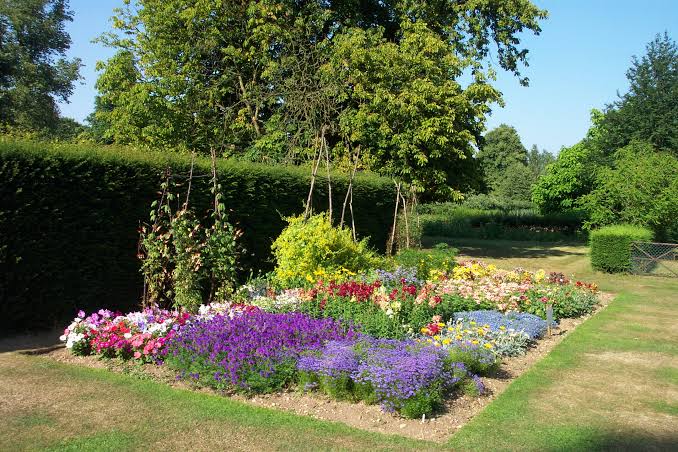Why should you grow a garden at home?
Gardening is one of the rewarding things to do. Gardening as a hobby can be quite fulfilling and beneficial at the same time. You can grow plants on your lawn, terrace, and balcony. So, follow this simple guide to start your garden at home today.
Table Of Contents:
- Positive impacts of the garden at home
- How a garden at home helps children and elderly citizens?
- How to manage space for gardening?
- What plants to grow on- rooftop gardens, partial sunlight, indoor and small spaces?
- What are the tools required for gardening?
- Measures to take for windy climates
- If you are a beginner in gardening and worrying about the money, these are the easy hacks you can try!
Positive Impacts Of The Garden At Home
- Keeps you fit: Gardening is a great form of low impact exercise. Observing the plants grow from seed, sitting in the quiet and peaceful corner of the house in the free time relaxes the mind and makes you happy.
- Saves money: Gardening at home with organic seeds is affordable. Growing vegetables or flowers on the terrace saves ac bills, makes the house cool, and lowers the temperature by providing a shed.
For example: Plucking mint leaves from the garden and serving the chutney with dosa or curd will give pleasure to your whole family.
- Tastes good: The ripe fruits and vegetables of the garden have high nutrition and are delightful. For example- Chilis in the supermarket are sometimes very spicy or sometimes are of low quality. But by growing it in your house you can maintain the quality.
- Chemical-free: Buying vegetables from the stores can have chemical mixtures but when growing vegetables at home, you have the authority to choose organic fertilizers. The fertilizer such as neem oil, cow dung, VermiCompost, seaweed fertilizer, and coco peat. These fertilizers strengthen the roots, make them weed-free, help aeration, and soil texture.
- Stops from wasting food: According to data, about 30% of the food supply gets wasted, But creating your garden at home gives you a clear idea about wastage and you stop wasting and preserve more.
How A Garden At Home Helps Children And Elderly Citizens?
- Involving in gardening will provide vitamin D and boost the serotonin level of the brain. Serotonin level controls your mood and emotions, so encourage your parents or grandparents to do the gardening to feel them calmer and happier. (To protect yourself from UV ray carry an umbrella and use sun cream or sunglass)
- The studies have shown that Mycobacterium vaccae present in the garden soil improves the immune system by relieving allergy, depression, and asthma ( which is a common problem of an elderly person).
- After your retirement, it can be a great option to spend time gardening and planting vegetables and fruits. Cucumber and tulsi are easy to maintain and easy to grow. Gardening can be a source of income too.
- In this modern world, our children are becoming very addicted to mobile phones or digital games. So, from a young age, if involving them in gardening will help them to build empathy for our nature also to become responsible.
- A child becomes more creative and learns about plants, sunlight, climate, and also nutrition. So, a garden at home will be a place for fun education as well.
- Children like bright colors, so you can grow a pumpkin, sunflower, tomato, Jasmine, lemon, basil, carrots, grasses, and strawberries.
How To Manage Space For Gardening?
- Gardening can be done on the terrace, balcony, or lawn. But if running short of space you can grow your vegetables on the community lawn. Also, you can buy hanging planters and wall planters.
- After fixing the area choose a place where it gets the maximum amount of sunlight (at least 6hours of sunlight).
- Different plants have different sunshine needs. On the seed packet, there’s information about the sunlight needed.
- Shade: The plants which do not need any sunlight.
- Partial sunlight: Plants that need 2-5 hours of direct sunlight.
- Full sunlight: The plants that need at least 6-8hours of direct sunlight. 10am – 6pm.
- Now choose plants according to the season and weather.
- Choose soil that is full of nutrients. Due to rain, the nutrients may wash away, so feed the soil with organic fertilizer regularly.
- Before using it in containers, mix the soil with cocopeat and red soil in equal proportions. Leave it for one week. The fertilizers and soil are available online.
- Give water in the morning to stay hydrated. Make a drainage system so that the excess water can flow or make a hole in the pot or planters.
What Plants To Grow On- Rooftop Gardens, Partial Sunlight, Indoor And Small Spaces?
Rooftop garden: herbs, brinjal, potato, chili, carrots, and coriander.
Partial sunlight: lettuce, beet, cabbage, kohlrabi, and broccoli
Indoor: Peace lily, money plant, aloe Vera, and snake plant. These plants make the air pure by releasing oxygen at night too.
Small spaces: Cherry tomato, cucumber, rs, radish, and spinach.
What Are The Tools Required For Garden at home?
The tools are:
- Shovel,
- Gardening rake,
- Trowel,
- Watering can
Measures To Take For Windy Climates
If you are having a big garden and having windy climates, putting a fence all around helps to hold back the air.
But for small gardens, it’s not necessary.
If You Are A Beginner In Gardening At Home And Worrying About The Money, These Are The Easy Hacks You Can Try:
- Use banana or other fruit and vegetable peels or tea compost as fertilizers instead of chemical fertilizers.
- Containers, cartoons, extra paintbox or wall color buckets, wooden pieces can be used to make containers.
- hanging pots is another option, but make sure to have a good structure of the drainage system.

